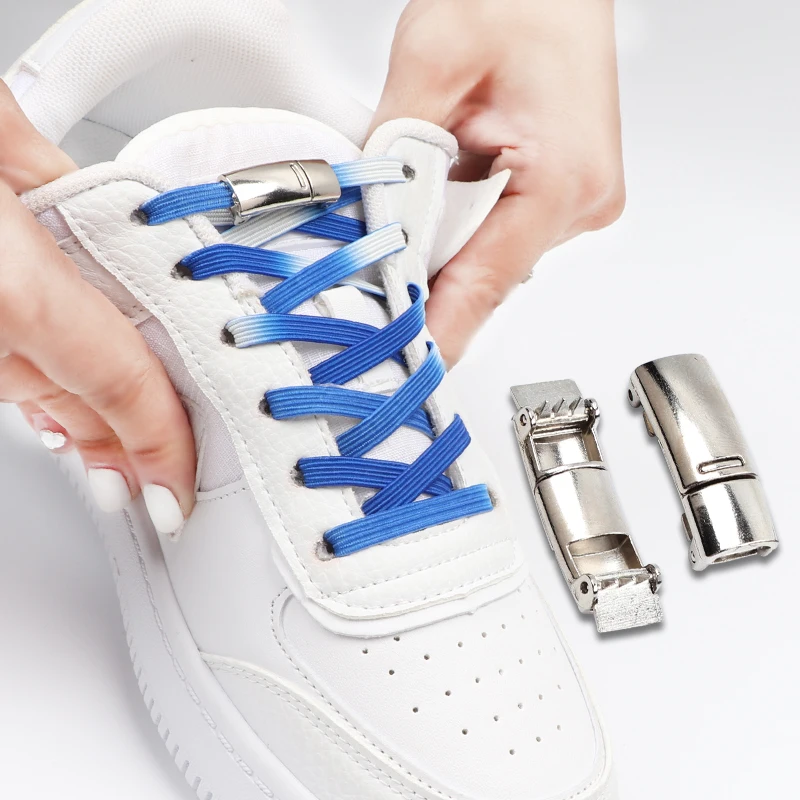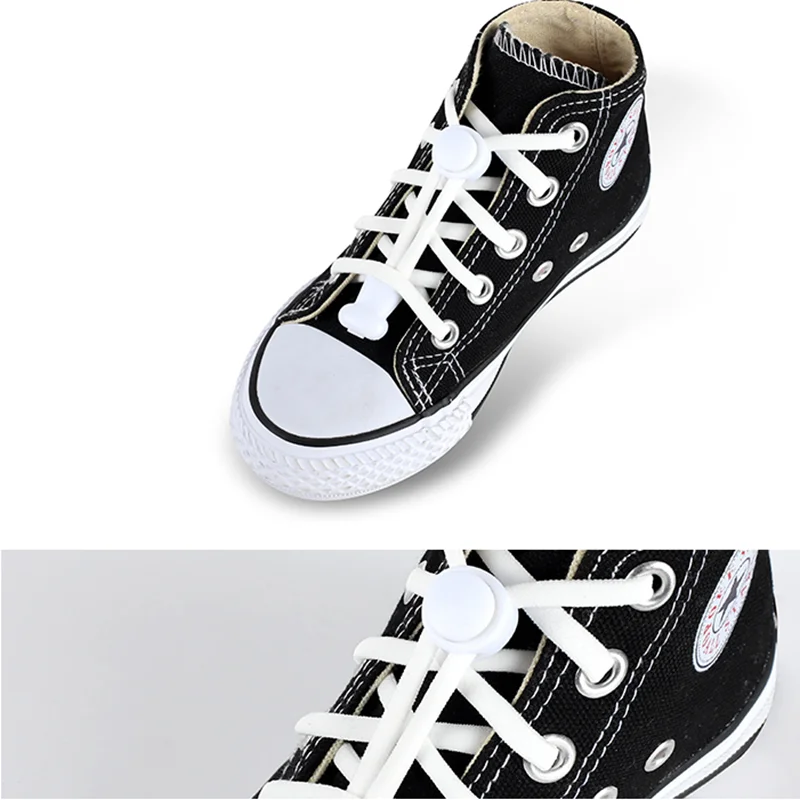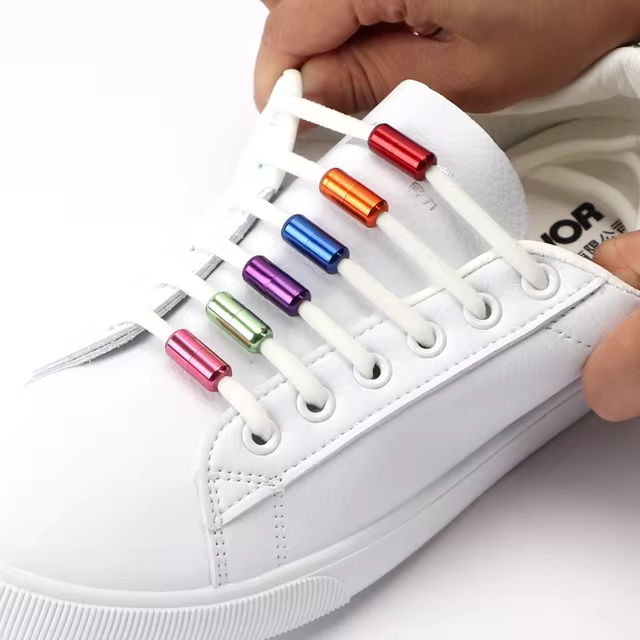The Problem with Long Shoelaces
Long shoelaces can create a host of issues for wearers. One of the main problems is the risk of tripping. Loose laces can easily become caught underfoot. This poses a safety hazard whether you’re walking around your home or out running. Secondly, long laces tend to drag on the ground. This causes them to wear out much faster, leading to fraying and sooner replacements. It also means they get dirty quickly, which can ruin the look of your shoes.

Furthermore, for those who engage in sports or high-intensity activities, long shoelaces can interfere with performance. They might catch on equipment or other obstacles. This can disrupt your activity and, worse, lead to injuries. Even in everyday situations, untidy laces can become a nuisance, making it harder to maintain a polished and put-together appearance.
Lastly, if you’ve found the perfect pair of shoes but they come with laces too long for your liking, it’s frustrating to feel limited in your options. You may not want to cut them, as finding the exact replacement can be difficult, especially if they’re custom or uniquely colored. Therefore, learning how to shorten shoelaces without cutting becomes a valuable skill for shoe enthusiasts and anyone looking to avoid these common footwear problems.
Why Avoid Cutting Your Shoelaces
Many people wonder why they shouldn’t just cut their shoelaces. It seems like the quick fix to long laces. However, there are several reasons to avoid this. Here are some key points to consider:
- Matching Colors and Styles: Finding an exact match for your shoelaces’ color and style can be difficult. Manufacturers often produce unique shades and patterns that are hard to replicate.
- Resale Value: If you plan on selling your shoes later, altered laces can reduce their resale value. Original, uncut laces maintain the integrity of the shoes.
- Adjustment Flexibility: Sometimes you need longer laces. Whether it’s for a different tying style or to accommodate swelling feet, uncut laces offer more versatility.
- Aesthetic Appeal: Cut laces often fray and look untidy. Neat laces contribute to a cleaner appearance and maintain the design as intended by the shoe brand.
- Sustainability: Snipping laces contributes to waste. Using techniques to shorten shoelaces without cutting promotes sustainability and reduces your environmental footprint.
Avoiding the scissors can preserve the life and look of your laces and shoes. Plus, it grants you the flexibility to adjust lace length as needed. The following sections will explore techniques to help with this, allowing you to enjoy the perfect fit without permanently changing your shoelaces.
Knotting Techniques to Shorten Shoelaces
One effective way to shorten shoelaces without cutting is to use different knotting techniques. By adjusting the way you tie your shoelaces, you can effectively reduce their length and prevent them from dragging on the ground. Here are some knotting methods to try:
- Loopback Knot: Start by tying your laces as usual. Then, take the loops and cross them over, tucking them back into the last lacing section nearest the toe of the shoe. Tighten to secure the shortened lace.
- Double Back Knot: Tie a standard bow knot, but before pulling the loops tight, pass them through the lacing again. This creates a double loop, shortening the lace without the need for cutting.
- Surgeon’s Knot: Useful for locking the laces in place, especially for runners. Simply tie a starting knot, then before the bow, make an extra loop with one lace around the other. Tighten down snugly.
- Barrel Knot: Good for extremely long laces. Coil the excess lace around your hand to create loops, then pass the end through the loops to secure it. Tighten and let it rest against the shoe.
Each of these knotting techniques not only shortens the lace but can add a unique look to your shoes. Choose the one that best suits your lace length and activity level. Remember to maintain even tension to prevent unnecessary stress on the laces or your feet. Experiment with these techniques to find the perfect balance between comfort, style, and safety.
Tucking Methods for Excess Lace
In addition to knotting, tucking methods can effectively shorten shoelaces without cutting them. Tucking excess lace avoids the problems that come with long laces and maintains a neat appearance. Here’s how to employ tucking methods:
- Hide Lace Ends Inside Shoes: Simply lace your shoes and then tuck the remaining lace ends into the sides of the shoes near the arch of your feet. This keeps them out of the way securely.
- Under-Cross Tuck: After tying your shoes, cross the lace ends underneath the crossed laces on the shoe’s upper. Then, tuck the excess up under the other lacing, hiding it from view.
- Lace Cage Tuck: Form a small ‘cage’ with the laces by looping them horizontally between eyelets. Tuck the leftover lace ends through this section to shorten and secure them without altering appearance.
- Vertical Lacing Tuck: Thread your laces vertically between eyelets and then tuck the remaining length between the shoe tongue and laces. This is practical and maintains a clean look.
Each tucking method offers a quick fix to long shoelaces, providing a solution that keeps your shoes looking tidy and minimizes tripping hazards. Experiment with these tucks to find the one that works best for the length of your laces and shoe design. Remember to check the tucks after a period of wear to ensure they remain secure and comfortable.
 Using Lace Anchors to Manage Length
Using Lace Anchors to Manage Length
Another innovative approach to shorten shoelaces without cutting is the use of lace anchors. Lace anchors are small devices designed to lock your laces in place after you’ve adjusted them to the desired length. Here’s how they can help:
- Simple Installation: Lace anchors attach to shoelaces quickly and easily. Slide them on, adjust the length, and lock.
- No Slip Grip: They provide a firm hold, ensuring your laces stay at the perfect length all day.
- Discreet and Comfortable: Once installed, lace anchors stay hidden beneath the eyelets and do not cause discomfort.
- Reusable: If you decide to change your laces or shoes, you can reuse the same lace anchors.
- Versatile: Lace anchors are great for all types of shoes, from athletic to casual wear.
Using lace anchors is a brilliant solution for managing shoelace length without permanently altering the laces. They’re especially useful for children’s shoes, as they can be readjusted as needed for growing feet. They also eliminate the need to tie and untie your shoes, making them convenient for those who seek quick and easy footwear solutions. Remember to purchase quality anchors that can withstand the wear and tear of daily use. With lace anchors, you can keep your laces at the ideal length with minimal effort and maximum efficiency.
Creative Ways to Lace Your Shoes for Shorter Length
Adopting creative lacing styles can effectively shorten your shoelaces without the need for cutting. Here are some inventive techniques you can try:
- Straight Bar Lacing: Ideal for dress shoes and creates a neat appearance. Lace horizontally from one eyelet to the next across the shoe, reducing lace length on the outside.
- Lydiard Lacing: Also known as runner’s tie, it gives you extra lace length at the top for a snugger fit, while the rest of the shoe remains comfortably laced, shortening the free ends.
- Ladder Lacing: This military-style lacing not only looks intriguing but also uses up more lace length as it weaves up the shoe.
- Bow Tie Lacing: A decorative pattern resembling a series of bow ties down the shoe. This style consumes more lace, leaving less slack.
- Zipper Lacing: Ensures laces stay tight and evenly distributes tension, using up extra length in the process.
- Double Helix Lacing: A stylish and tight lacing method that uses more lace length and keeps a comfortable fit.
Each of these lacing methods can change how your shoes look and feel. They offer personalized options for differing shoelace lengths. Plus, they add a unique twist to your footwear. Try out various styles to see which one suits your shoes and shoelace length the best. These practical yet stylish solutions ensure you won’t have to compromise on your comfort or shoe’s functionality.
 Alternatives to Permanent Shortening
Alternatives to Permanent Shortening
If you’re hesitant to cut your shoelaces, there are non-permanent fixes to consider. These alternatives let you adjust lace length while keeping them intact. Here are a few options:
- Interlacing Variations: Change the way you lace up. Some methods use more lace, which shortens the ends.
- Removable Lace Clips: These small gadgets clip onto your laces. They allow you to fold and hold extra length.
- Elastic Laces: Swap to elastic shoelaces. They stretch to fit and recoil to keep the ends tidy.
- Shoelace Charms or Beads: Thread charms onto the laces. They add style and consume extra length.
These methods can temporarily adjust the length of your shoelaces. Switch back whenever you like, with no damage done. Always be mindful and select an alternative suited to your shoe style and lace length. Testing different methods ensures you find a way that provides both function and fashion.
Tips for Maintaining Ideal Shoelace Length
Maintaining the perfect shoelace length is crucial for both comfort and style. Here are some tips to keep your laces at the ideal length:
- Regular Adjustments: Check and adjust your laces before each wear. This ensures they’re always the right length for your needs.
- Choose the Right Technique: Select a shortening method that suits your activity. For sports, consider a secure knotting technique. For casual wear, a tucking method or creative lacing can offer a solution.
- Lace Quality Matters: Invest in good quality laces that won’t stretch out or wear quickly. Durable laces maintain their length better over time.
- Monitor for Slippage: Over time, knots and tucks can loosen. Inspect your laces periodically to make sure they haven’t slipped, causing them to lengthen unintentionally.
- Be Consistent: Use the same technique to shorten shoelaces without cutting each time you lace up. This helps you become quicker and more proficient at maintaining the desired length.
- Storage Care: When not wearing your shoes, store them properly. This keeps the laces from getting tangled or stretched out.
- Educate Others: Teach family and friends how to shorten shoelaces without cutting. Sharing these tips can help them manage their shoelaces too.
By following these simple guidelines, you can enjoy shoes that look great and fit perfectly. Remember to experiment with different methods to find what works best for your particular shoelace and shoe combination.